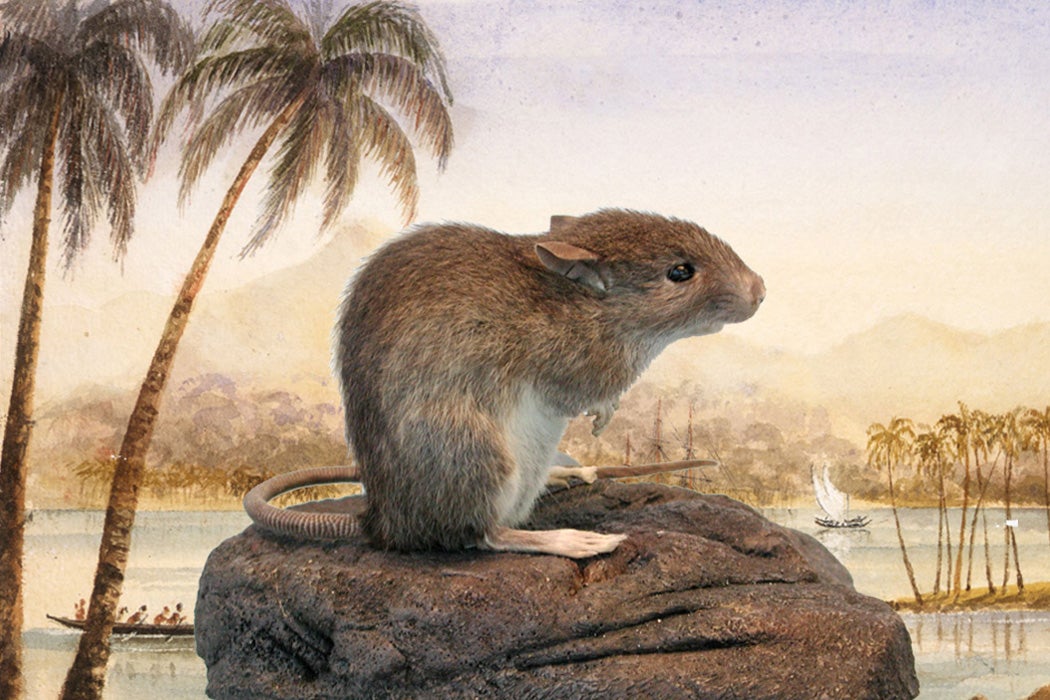For the past week or so, I’ve been clearing out my office, re-shelving dozens of books, filing hundreds of articles, working my way through reams of paper covered in scribbled outlines, arguments, diagrams, clarifications, lists. Here, a triangle meant to depict a synthesis of conflicting ideas, there, a timeline covering two thousand years of human history; all of it—the whole mess—the residue of some seven or eight years’ work on a book about the Polynesian migrations.
The story, like the Pacific itself, is huge, but in its rough outline it goes something like this. Between one and three thousand years ago—from about the time of Stonehenge to the First Crusade—a sea people traveling in voyaging canoes, explored and colonized the farthest reaches of the Pacific Ocean, establishing themselves on nearly every habitable rock across an area of more than ten million square miles. Known to us now as Polynesians (a group that includes Hawaiians, Samoans, Tongans, Tahitians, and New Zealand Māori, among others), they were the first and for a very long time the only people to occupy what the eighteenth-century explorer Captain James Cook referred to as the “fourth part” of the world.
It is not only a big story but, as it turns out, a many-faceted one. We have no direct access to people who lived thousands of years ago, and everything that can be known about them comes to us by way of some body of research. The long history of Polynesia is thus a composite built up from many disparate discoveries in fields like linguistics, folklore, archaeology, astronomy, genetics, and cognitive psychology. In fact, to the extent that such a story is even knowable, it is only thanks to the work of innumerable scholars, many of whom are almost lost to history themselves. And, although I went into this project knowing something about Pacific history, I am by no means an expert in many of these fields, which is why I have spent the last seven or eight years down one research rat hole after another.
A rat hole, according to Urban Dictionary, is a digression, often an unprofitable or distracting one. “Ratholes,” we are told, “usually open up when related but tangential topics are discussed which are explored in much more detail than is required.” Of course, as every researcher knows, it is difficult to determine at the outset which will be the tangential topics and which the essential. Which of many fascinating digressions will prove ultimately to have been a distraction and which will turn out to be the key to some fundamental understanding, the perfect illustration of an essential idea, a critical bridge from one part of the story to another? How to know which unlikely byway will lead to some valuable tidbit and which will dump you out unceremoniously in a dark and profitless dead end?

One of the rat holes I went down led me to a woman named Teuira Henry, who lived in Tahiti at the end of the nineteenth century. A descendant on both sides of some of the earliest missionaries in Polynesia, Henry was the author of a book and several important papers on aspects of ancient Tahitian culture. Much of her work was based on material that had been assembled by her maternal grandfather, the Reverend John Muggridge Orsmond, who had begun collecting oral Tahitian traditions—myths, chants, songs, legends—almost as soon as he arrived in the islands in 1817. By 1828, he was referring to something he described as his “Mythology,” and in 1848 he placed a completed manuscript—which can fairly be assumed to have contained the most extensive collection of Polynesian traditions anywhere in the Pacific at that time—into the hands of a French naval officer with instructions that it should be presented to the government of France. What happened next is anyone’s guess, for no trace of this document has ever been found. According to one popular theory, it was probably burned in Paris during the upheavals of the French Second Republic.
Orsmond’s notes, however, survived, and after his death they passed to his granddaughter, who began the long process of reassembling and annotating them. In addition to the volume Ancient Tahiti, which was finally published more than a decade after her death, Henry contributed numerous articles on Tahitian folklore, place names, astronomy, and customs to the Journal of the Polynesian Society, and became a regular correspondent with the Society’s members. An accomplished scholar, Henry worked in French, English, and Tahitian; she never married and worked for much of her life as a schoolteacher in the Society and Hawaiian Islands. In the one photo I have seen of her, she appears as a dark-eyed, dark-haired young woman who could almost be taken for part-Tahitian, which I don’t think she was. And yet, fascinating as I found her, I had to leave her story on the cutting room floor. For the purposes of my book, the story of Teuira Henry did not go where I needed to go. It was a backwater, a dead end, a burrow from which, in the end, I had no other choice than to back out.
A rat hole that did serve my purposes, on the other hand, lead me somewhat ironically to actual rats—Polynesian rats, traveling in Polynesian canoes, who, according to the anthropological geneticist Elizabeth Matisoo-Smith, can serve as proxies for Polynesian voyagers. DNA is one of the most powerful tools for determining the path of prehistoric human migrations, but working with human DNA can be tricky. In many parts of Polynesia there is a high degree of cultural sensitivity around anything having to do with ancestors and the dead, and there is also sometimes resistance to participating in this kind of research on the part of indigenous communities, who have not always been treated very well by biological researchers in the past. In the 1990s, Matisoo-Smith pioneered an approach that obviated many of these concerns. Her idea was to look not at the genes of the people themselves but at those of their so-called “commensals,” the animals that traveled with them wherever they went. Polynesians brought several such creatures into the Pacific, including pigs, dogs, chickens, and rats. Of these, the ideal animal for Matisoo-Smith’s purposes, turned out to be Rattus exulans, the “wandering” Pacific rat. Rattus exulanscannot get to the islands on its own; it does interbreed with the rats introduced to the Pacific later by Europeans; it dislikes wet places and is thought unlikely to have traveled in European ships. Best of all, there are lots of rat bones in Polynesian archaeological sites, and no one cares if you dig them up or destroy them to extract their DNA.
Get Our Newsletter
Studies of rat DNA have since become part of the standard argument about how the islands of Polynesia were settled. They confirm Tahiti and the Society Islands were likely a general homeland region from which the remote points of the Polynesian Triangle—New Zealand, Easter Island, and Hawaiʻi—were originally settled. They also suggest some interesting things about the numbers of settlers that might have colonized these different island groups. On some islands the rats’ genetic diversity suggests a large number of settlers arriving over an extended period of time; on others it looks as though they might have been introduced only once, possibly by just one canoe-load of people
In the past seven or eight years, I have burrowed through a whole rat city’s worth of tunnels like these, some leading to indispensable discoveries, some to intriguing but marginal ideas, some to material that ultimately proved completely unusable. It’s not a very efficient process; to most people it probably looks like a pretty funny way to spend your time. But those of us toiling away in this fashion know that we’re not just doing it for the final product, because no one would ever embark on this kind of research if they didn’t love it for the experience alone.
Need JSTOR Access to Write Your Book? Try JPASS!







